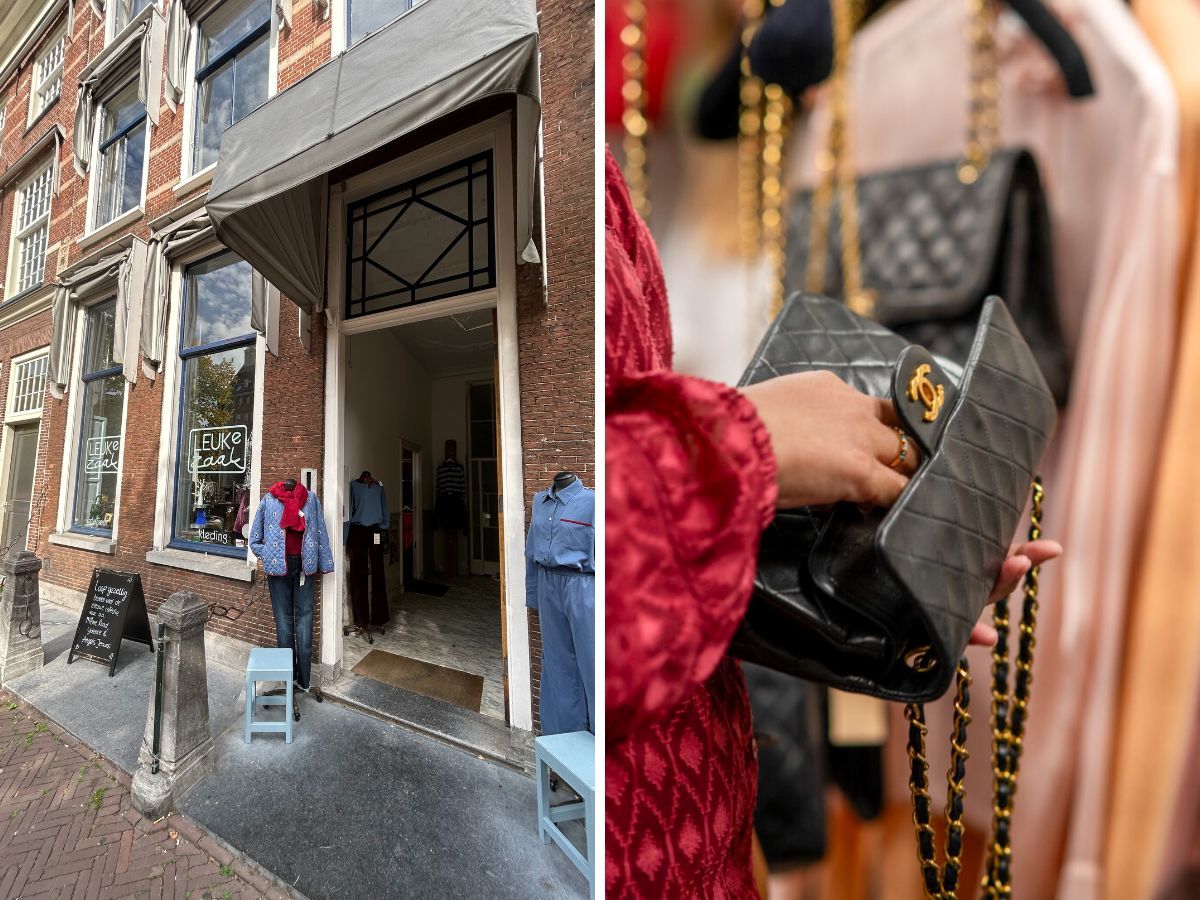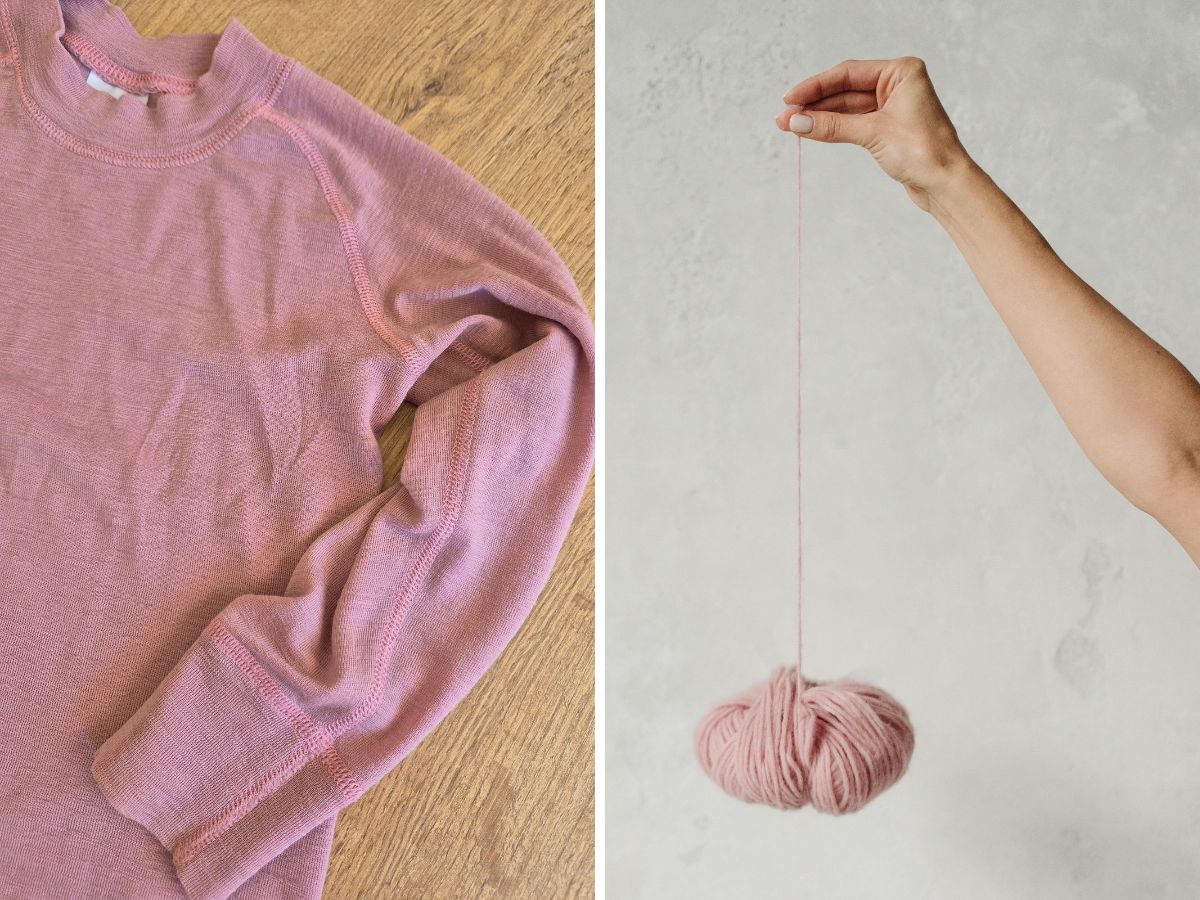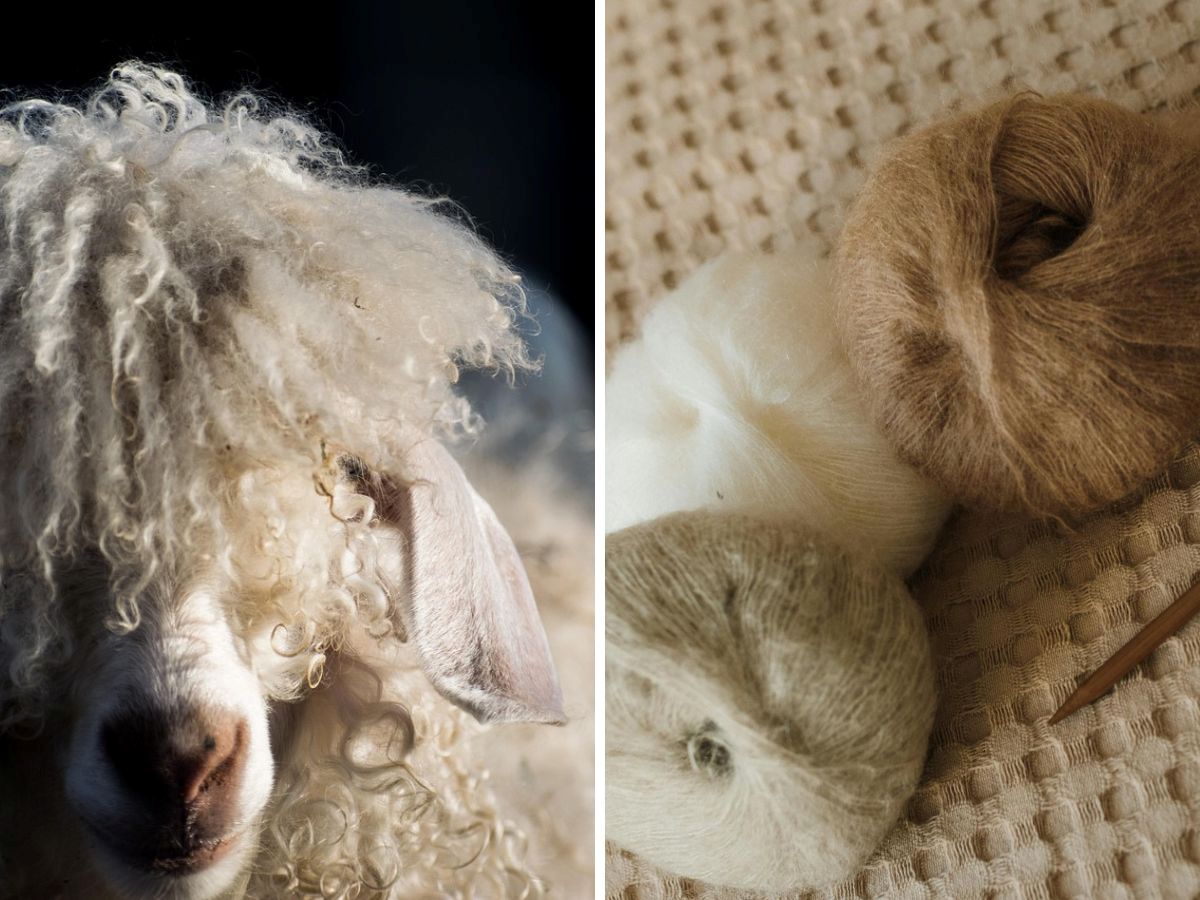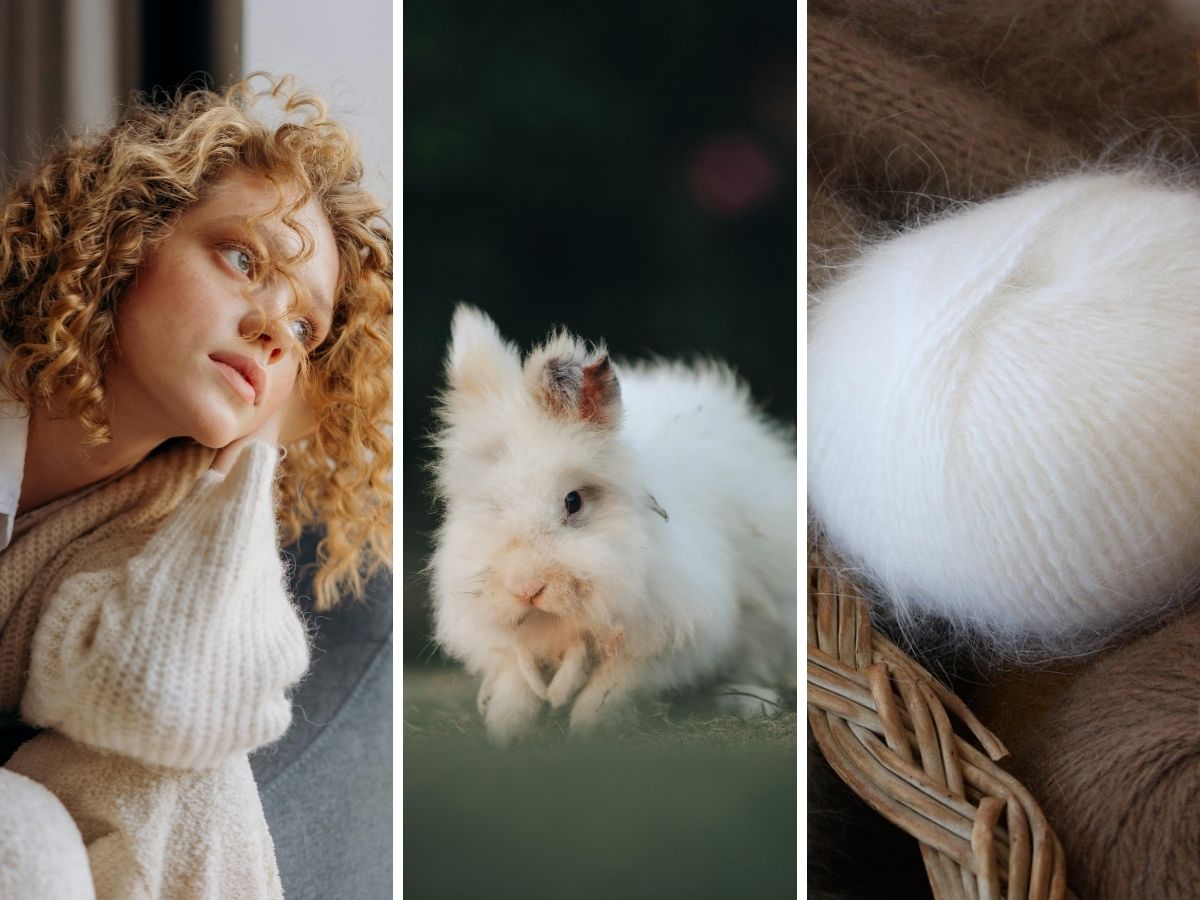It is no secret that buying second-hand clothes is much more sustainable than scoring new outfits. But buying underwear at the thrift shop is a step too far for many. We understand that. Fortunately, when buying new pants and bras, there are also more sustainable options. We found out for you what to look out for when buying sustainable underwear.
What is sustainable underwear?
As with other garments, for the sustainability of lingerie you look at the materials and the production process. But what exactly does sustainable lingerie mean? More sustainable or eco-friendly lingerie causes as little damage to our planet as possible, there are good working conditions for the people who make the underwear and the production does not cause animal suffering. And: the longer you can enjoy your panties or bra, the more sustainable it is, of course! Therefore, make sure you buy the right size so that the fabric does not overload and wear out too quickly. So the quality of the material is also very important when choosing durable underwear. At first, durable underwear may seem more expensive, but because you usually last longer - because quality! - that is not the case in the long run. Additional advantage of sustainable lingerie: those more eco-friendly fabrics are less likely to cause skin irritation. Moreover, the materials also breathe better. Good for the environment and for your body!
Washing tip for underwear!
To keep your lingerie beautiful for a long time, wash it at low temperatures and do not put it in the dryer. You can also hang a bra out for a while to reduce the number of washes and thus wear. And because many underwear contain a (small) percentage of synthetic fabrics, we recommend putting these smallest garments in a laundry bag of GuppyFriend. Thus, any particles of microplastics released during washing are safely captured.
Labels for sustainable underwear
You may be dizzy with all the points to consider when buying sustainable lingerie. Luckily, there are labels! Want to buy responsible underwear? Then look for bras and pants with the GOTS label. GOTS stands for Global Organic Textile Standard and is the standard for the production of organically produced natural fibres. Does an pants or bra have this label? Then you know it complies with strict environmental requirements, including when it comes to textile dyes. For example, it must not contain harmful substances such as heavy metals or pesticides. It must also be cleaned before it can be discharged into the environment. GOTS also sets strict requirements for working conditions, such as fair payment and no child labour. So you buy fairer and more environmentally friendly underwear! Among others, the brand mey has several pants for sale that meet the requirements for both the GOTS label and the OEKO-TEX Standard 100, which indicates that the garment has been tested for harmful substances.
Besides the GOTS label, you can look out for the label of the Organic Content Standard (OCS). This label also has strict requirements for environmental standards. Do you want to focus on good working conditions when buying lingerie? Then you can check whether the underwear has a hallmark such as Fair Trade Certified, Fair Wear or OEKO-TEX Made in Green has. Thus Calida a nice brand that has a lot of underwear with the latter label.

Lingerie with a good label is the tip.
Durable materials for lingerie
The fabric of your new pants or bra makes the biggest difference in making a more sustainable choice. Synthetic fibres like elastane, which cause your underwear to stretch, are especially bad for the environment. Until a sustainable alternative to elastane in lingerie is found, it is better to choose underwear made of good (!) natural materials, in which only a small percentage of the fabric is synthetic. Find out more about the environmental impact of elastane and why we cannot yet do without it in this article.
Durable coloured underwear
Lingerie in a nice colour is of course tempting. You might also want something different. We get it! But the techniques used to colour underwear do not contribute to its sustainability either. This is because dyeing often involves synthetic dyes, which contain many chemicals and are not bio-soluble. Waste water from the dyeing process is often discharged into rivers. Terribly polluting! But good news: there are also natural dyes. Unfortunately, these often also require chemicals, because otherwise the dyes do not adhere well to the fibres. But, there is a big difference in how polluting the wastewater is. Find out more about textile dyes in this article.
Lingerie with lace and mesh
When you think of beautiful lingerie, you probably think of lace and mesh. These are not specific fabrics, but a mixture of materials (lace) or a weaving method (mesh). For instance, lace is a mix of high-quality fabrics and threads, such as linen, cotton, silk, silver and gold thread. Mesh is a gauze-like method of weaving. It can be made of different materials; usually it is the synthetic materials polyester, nylon or spandex. Again, these materials are taxing on the planet to make, although there are some lovely sustainable lingerie brands that work with lace and mesh left over as cutting waste. A great example of this is the lingerie from Savara Intimates.
Cotton underwear
Okay, check. Synthetic materials are often not the most sustainable choice, partly due to the chemical, polluting processes during the fabric's production. Natural materials are often already a better choice, but even within natural materials there are many differences. Again, it depends on how the fabrics are made. Cotton cultivation, for instance, requires a lot of land, energy, water and pesticides. This is bad for the environment as well as for the workers working on the plantations. Modern slavery and child labour also still take place in cotton cultivation. Lingerie made of organic cotton is already a better choice: no artificial fertilisers and pesticides are used in its production and much less water is used. Organic cotton can therefore be recognised by the GOTS label. In addition to the aforementioned requirements, a garment with this label must consist of at least 70% of organic natural fibres and a maximum of 10% of synthetic or recycled fibres. Fine, so with this label you are usually in the right place. Great brands making underwear from certified cotton include ArmedAngels, Living Crafts, Aikyou, Olly Lingerie and Hess Natur. Find out more about cotton as a material in this article.
Other sustainable materials for underwear
Bamboo underwear
If sustainability is important to you, you will most likely come across bamboo underwear in your search process. Bamboo grows quickly. No pesticides and much less water are needed in cultivation (TOP!). That sounds great, but unfortunately there is something to this too. The plant can be turned into dust via a sustainable, mechanical process. With the emphasis on ‘can’. Because unfortunately, harmful chemicals that also regularly end up in nature are still often used. The TV programme Keuringsdienst van Waarde has here a shocking episode made about it. They even discovered that the so-called ‘eco-friendly certified bamboo fabrics’ caused a lot of damage to nature and to the health of the people who have to work with these fabrics or live near these toxins. Incidentally, this method of processing also causes the claimed antibacterial properties of bamboo underwear to be lost. However, the bamboo processing industry is working hard to make this process sustainable as well. Find out more about bamboo as a material for clothing in this article.
Hemp underwear
A word about hemp. Although you don't often come across underwear made of hemp yet, it is one of the most sustainable fabrics for clothing and therefore underwear and lingerie! Growing hemp requires no pesticides and only a little water and land. The nutrients the hemp plant uses to grow, it returns to the soil. Just make sure you buy underwear made from organic hemp; normal hemp production sometimes still uses chemicals to make the plant grow faster. A sustainable underwear brand working with this beautiful material is Hamppy. You can find more about hemp as a raw material for all kinds of products here.



Preferably choose underwear made from sustainable materials, such as organic cotton.
Lyocell and modal as lingerie material
Lyocell and modal - brand name: Tencel - are also known as ‘natural man-made fibres’. On your search for sustainable lingerie, you can also go for these materials just fine! And the range is huge. Tencel underwear is available from sustainable lingerie brands such as Underprotection and Organic Basics. Lyocell and modal are made from wood pulp from the eucalyptus tree, oak tree or birch tree. These are in sustainable forests that bear the FCS label for responsible forest management. The chemicals used in the production of lyocell and modal are not harmful and are 99.6% recycled. Tencel fibres are also fully biodegradable. Tencel fabrics are a lot more absorbent than cotton and breathe more. So, ideal material for pants!
Buying sustainable underwear
You have read in this article that, fortunately, there are many options for buying sustainable underwear. Fine! So when buying new bras or pants, it is most useful to pay attention to the labels that prescribe important requirements for you. If you buy lingerie with the GOTS label, you are often in the right place anyway. And: the longer your underwear lasts, the more sustainable it is. Choose the right size and don't tumble dry your durable underwear to slow down wear. With these tips, buying sustainable underwear doesn't have to be difficult at all!
Sources: Environmental Justice Foundation, Project Cece, World Wildlife Fund, House of U, Box office, Beautyweb, Bolas Underwear, Shop Like You Give A Damn, Vogue. Photo credits: main image: Andreea Popa (Unsplash), woman in black lingerie: Renata Schaitza (Unsplash), lace bra: Taryn Elliott (Pexels), mesh: Ron Lach (Pexels), cotton: Cottonbro (Pexels), white lingerie: Karolina Grabowska (Pexels).












